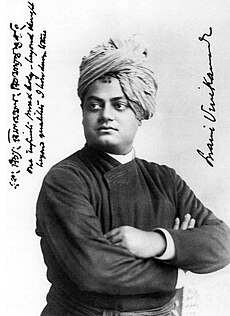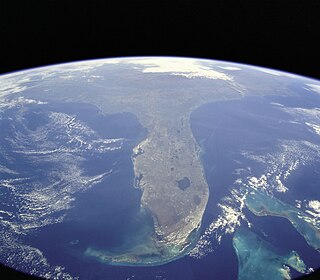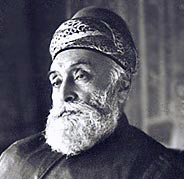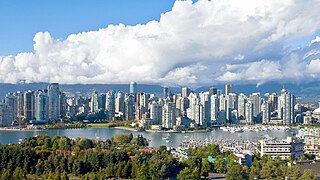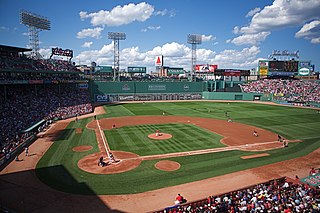
Ramakrishna Mission (RKM) is a Hindu religious and spiritual organisation which forms the core of a worldwide spiritual movement known as the Ramakrishna Movement or the Vedanta Movement. The mission is named after and inspired by the Indian saint Ramakrishna Paramahamsa and founded by Ramakrishna's chief disciple Swami Vivekananda on 1 May 1897. The organization mainly propagates the Hindu philosophy of Vedanta–Advaita Vedanta and four yogic ideals–jnana, bhakti, karma, and Raja Yoga.
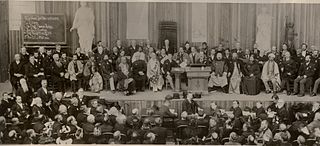
There have been several meetings referred to as a Parliament of the World's Religions, the first being the World's Parliament of Religions of 1893, which was an attempt to create a global dialogue of faiths. The event was celebrated by another conference on its centenary in 1993. This led to a new series of conferences under the official title Parliament of the World's Religions with the same goal of trying to create a global dialogue of faiths.

Beluṛ Maṭh is the headquarters of the Ramakrishna Math and Mission, founded by Swami Vivekananda, the chief disciple of Ramakrishna Paramahamsa. It is located on the west bank of Hooghly River, Belur, West Bengal, India and is one of the significant institutions in Kolkata. This temple is the heart of the Ramakrishna Movement. The temple is notable for its architecture that fuses Christian, Islamic, Hindu and Buddhist art motifs as a symbol of unity of all religions. In 2003 Belurmath railway station was also inaugurated which is dedicated to Belurmath temple.

Alasinga Perumal was a propagator of Vedanta and an ardent follower of Swami Vivekananda. Born in an orthodox Vaishnavite family at Chikkamagalur of Mysore, he took his education in Madras. After obtaining a B.A. degree in science he started his career as a school teacher.

Rev. Dr. John Henry Barrows (1847–1902) was an American clergyman of First Presbyterian Church and Chairman of the 1893 General Committee on the Congress of Religions. He was the one who claimed that Abraham Lincoln had become a Christian in 1863.
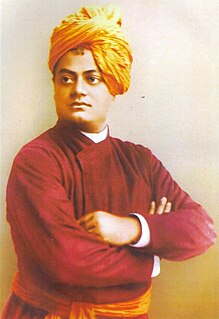
Swami Vivekananda was a Hindu monk from India. He played significant role in the growing Indian nationalism of the 19th and 20th century, reinterpreting and harmonising certain aspects of Hinduism. His teachings and philosophy applied this reinterpretation to various aspects of education, faith, character building as well as social issues pertaining to India, and was also instrumental in introducing Yoga to the west.
In religion and spirituality, a pilgrimage is a very long journey or search of great moral significance. Sometimes, it is a journey to a sacred area or shrine of importance to innate faith. Members of every major religion participate in pilgrimages. A person who makes such a journey is called a pilgrim.

Lectures from Colombo to Almora (1897) is a book of Swami Vivekananda based on his various lectures. After visiting the West, Vivekananda reached Colombo, British Ceylon on 15 January 1897. Upon Vivekananda's arrival in South India, a forty-feet high monument was built by the king of Ramnad on the spot where he landed to celebrate his achievements at the West. He reached Calcutta via Madras on 20 January 1897. Then Vivekananda travelled extensively and visited many Indian states. On 19 June (1897) he reached Almora. The lectures delivered by him in this period were compiled into the book Lectures from Colombo to Almora. The book contains reports of his 17 lectures.

Neo-Vedanta, also called Hindu modernism, neo-Hinduism, Global Hinduism and Hindu Universalism, are terms to characterize interpretations of Hinduism that developed in the 19th century. The term "Neo-Vedanta" was coined by Paul Hacker, in a pejorative way, to distinguish modern developments from "traditional" Advaita Vedanta.

Swami Vivekananda was an Indian Hindu monk. He was a key figure in the introduction of the Indian philosophies of Vedanta and Yoga to the western world. The 150th birth anniversary of Swami Vivekananda was celebrated all over India and in different countries of the world. Ministry of Youth Affairs & Sports of India decided to observe 2013 as the year of 150th Birth Anniversary of Swami Vivekananda. Year-long events and programs were organised by different branches of Ramakrishna Math, Ramakrishna Mission, central government and different state governments of India, education institutions, youth groups etc. Bengali film director Tutu (Utpal) Sinha made a film The Light: Swami Vivekananda as a tribute to Swami Vivekananda on his 150th birth anniversary. The movie was released on 23 August 2013.

Vedanta Philosophy: An address before the Graduate Philosophical Society is a lecture given by Swami Vivekananda on 25 March 1896 at the Graduate Philosophical Society of Harvard University. After this lecture, the university offered Vivekananda the chair of Eastern Philosophy.

To the Fourth of July is an English poem written by Indian monk and social reformer Swami Vivekananda. Vivekananda wrote the poem on 4 July 1898 on the anniversary of the United States' independence.
Hinduism in Los Angeles made its first significant impact in the late 19th century when wandering Hindu monk Swami Vivekananda, a disciple of Ramakrishna Paramahamsa, came on his second visit to the United States. Swami Paramananda, a disciple of Swami Vivekananda, founded the Vedanta centres in Los Angeles and Boston.

Swami Vivekananda, the 19th-century Indian monk, came to Los Angeles, California in 1899 during his second visit to the West. His oratorical skills and presentation of Hindu religious tenets and comparison with other religious beliefs made him a celebrity among a wide spectrum of American audience. Between 1893—1897 and 1899—1902, he traveled widely in the US lecturing on a wide range of subjects and also established Vedanta Centers. There are such centers in many cities in the US including many centers in California. In 1899, after delivering lectures in New York, he travelled to the western part of United States and reached Los Angeles via Chicago. He then went on to deliver lectures in California at Oakland, San Francisco and Alameda.
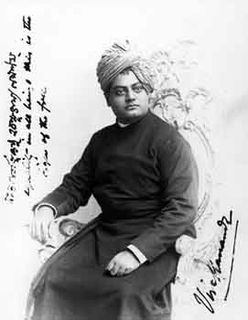
"Religion not the crying need of India" was a lecture delivered by Indian Hindu monk Swami Vivekananda on 20 September 1893 at the Parliament of the World's Religions, Chicago. In this lecture he criticized Christian missionaries for ignoring the needs of starving millions in India. He said that Indians did not need any religious education, as there was already a surfeit of religion in the East; he stated that they needed "bread" to save their lives, which Christian missionaries did not provide.
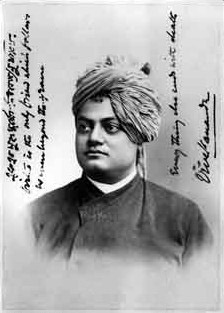
"Buddhism, the Fulfilment of Hinduism" is a lecture delivered by Indian Hindu monk and expounder Swami Vivekananda on 26 September 1893 at the Parliament of the World's Religions in Chicago. In this lecture, he expressed his opinion that "Buddhism was the fulfilment of Hinduism."

Vedanta Society of New York (VSNY) was the first Vedanta Society founded by the Indian Hindu monk Swami Vivekananda in New York in November 1894. In 1897, Swami Abhedananda, another disciple of Ramakrishna, came to the United States and took charge of the society. He was the president of the society until 1921. Currently, the Vedanta Society is affiliated with the Ramakrishna Math religious monastic order and the Ramakrishna Mission.

Swami Vivekananda, the nineteenth-century Indian Hindu monk is considered as one of the most influential people of modern India and Hinduism. Rabindranath Tagore suggested to study Vivekananda's works to learn about India. Indian independence activist Subhas Chandra Bose regarded Vivekananda as his spiritual teacher. Mahatma Gandhi said that after reading the works of Vivekananda his love for his nation became a thousand-fold.
